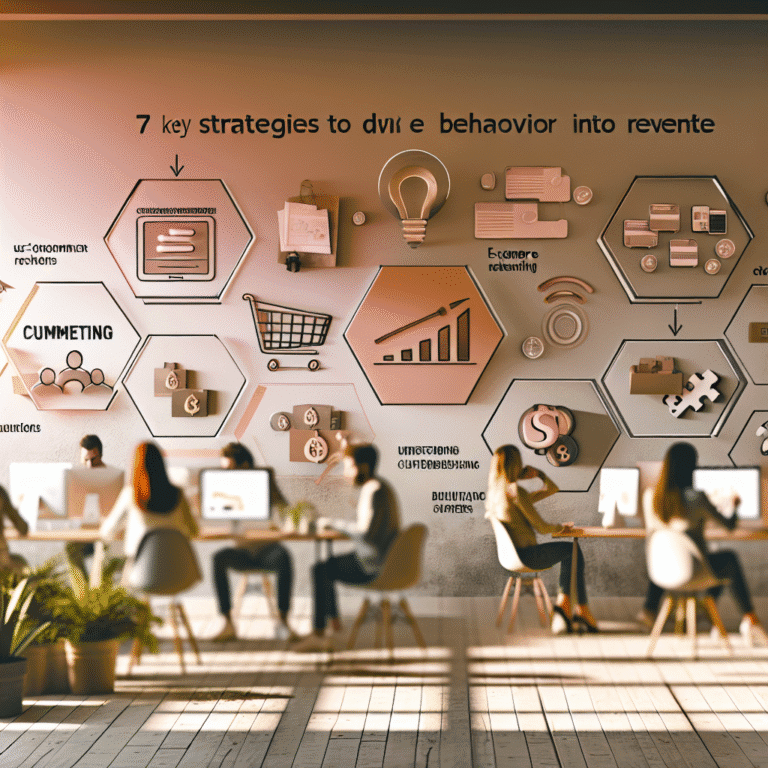From Clicks to Customers: 7 Smarter E-Commerce Strategies
So, you’re funnelling money into traffic like it’s the last pub open on a Friday night. Your CPC campaigns are ticking over nicely, social ads are polished, and influencers are tagging everything in sight. But, alas, your e-commerce conversion rate is still as flat as a pancake dropped on a Monday.
You’ve got site visits and social follows aplenty, yet capturing actual customers feels like catching a mythical creature. It's not the traffic that's the issue, it's the conversion. Many e-commerce sites bring in traffic but falter at converting it into sales. The fix? Stop guessing and start using data-driven strategies to find out what your customers are really doing.
Let’s explore seven strategies that successful e-commerce brands use to turn casual browsers into dedicated buyers.
Understand Customer Behaviour to Boost Conversion
To lift your e-commerce conversion rate, delve deeper than just bounce rates and assumptions. Think of data like an anthropologist would — it reveals human hesitation.
Focus on these areas:
- High-exit product and category pages
- Cart abandonment moments: spots where interest fades
- Heatmaps that highlight unseen buttons and neglected CTAs
- Session recordings using tools like Hotjar or FullStory to spot friction in the buying path
Take a Danish furniture brand, for example, that tweaked a phrase from "Free Shipping" to "Guaranteed Delivery by Thursday." They raised conversions by 17%. The offer didn’t change; the clarity did.
Key takeaway: People scan, they don’t read. Your job is to make your offers clear in the blink of an eye.
Direct Your A/B Tests to Where They Count
Not all your web pages need an A/B testing obsession. It’s the product pages, pop-ups, and checkout flow that drive the money.
Focus your tests on:
- Product pages: experiment with price displays, review placements, image order, and CTA text
- Checkout steps: adjust field arrangements, shipping info, and trust signals
- Email pop-ups: try different headline hooks, lengths, and clarity of incentives
Look at a skincare brand that added urgency next to social proof — “9,733 people rated this cleanser 5 stars, and it’s flying off the shelves.” The result? Add-to-carts jumped by 22%, and conversions went up by 18%.
Lesson learned: The right psychology at the right scroll depth beats a polished design any day.
Personalise the Experience with Smart Insights
Every shopper deserves a tailored experience. First-time visitors, loyal customers, and newsletter subscribers shouldn’t all follow the same journey.
Use predictive analytics like RFM segmentation to craft relevant experiences:
- Custom homepage banners: “Welcome back! Your size 10 Adidas shoes are back in stock.”
- Abandoned cart emails: triggered by what they abandoned and what similar shoppers bought later
- Push notifications: based on time, device, and genuine interest
Tools like Klaviyo, Segment, and Google Analytics Audiences can work wonders in the background.
Remember: Personalisation only feels creepy when it’s wrong. It's annoying when Netflix suggests cartoons because your nephew watched on your account.
Grab Zero-Party Data Before It's Gone
As cookies crumble and privacy laws tighten, savvy e-commerce brands are embracing zero-party data — the things customers willingly share.
Use it effectively:
- Engaging quizzes to gather preferences without a fuss (“Shopping for a gift or treating yourself?”)
- Integrated fit finders and size guides in sign-up flows
- Product suggestions based on asked preferences, not past buys
A coffee subscription brand, for instance, introduced a two-question quiz about brew strength and roast preference. The result? A 29% boost in signups, higher initial orders, and fewer returns. People felt recognised rather than stalked.
Use zero-party data to ease the customer journey, not complicate it.
Treat Checkout Optimisation Like a Sacred Ritual
An inefficient checkout can waste all your traffic efforts. Try buying from your own site. On mobile. In rush-hour conditions.
Look out for:
- Sneaky shipping fees surfacing after the emotional purchasing decision
- Unnecessary fields (let’s face it, who still needs a fax number?)
- Mandatory account creation
- Unclear shipping options (“2–5 business days” sounds sketchy)
Top e-commerce sites simplify and calm customers:
- Clear stepped checkouts with a progress bar
- Autofilled data for returning visitors
- Guest checkout as the default option
- Multiple payment methods (Shop Pay, Apple Pay, Klarna, PayPal — let customers choose)
Baymard research found a staggering $260 billion is lost annually due to avoidable checkout friction. Even a mere two-click improvement can significantly boost rates.
Use Post-Purchase Data to Enhance Lifetime Value
Many brands focus on snaring that first purchase. But for true growth, it's the third, fourth, and beyond that count.
Use post-purchase data smartly:
- Predict when customers are likely to reorder
- Identify what they often buy next
- Recognise where support tickets are accumulating to avoid frustration
Turn this into gold:
- “Bought this moisturiser last month? Want to grab a backup with 10% off before you run out?”
- “Those who purchase X usually grab Y next — want to bundle and save?”
Using tools like Repeat and Postscript can automate these strategies.
Retaining customers is less about shopper programs and more about delivering the perfect prompt before they even think to ask.
Scrutinise Micro-Metrics for Big Insights
Your overall conversion rate can be a bit of a red herring if you ignore the smaller signals leading up to it.
Watch these micro-metrics:
- Shift in add-to-cart rate: signals prospective interest
- Scroll depth on product pages: do they find what they need or lose interest halfway?
- Coupon code errors: customers wanted to buy, but slipped up due to a technical problem
- Return policy clicks: if this suddenly drops, have you inadvertently hidden the info?
For instance, a streetwear brand swapped "Returns accepted within 30 days" for "All Sales Final" to cut fraud. Instead, they inadvertently increased refunds. Customers panicked and assumed the worst when they couldn't find return details.
Takeaway: Observe how customers behave, not how you expect them to act. Conversion problems often start long before the buy button is clicked.
Final Thought
Boosting conversions isn’t about tossing out more features or flooding more channels. It’s about understanding what’s really happening.
Data-led strategies don’t kill creativity; they sharpen it. They challenge your assumptions, increase relevance, and help you turn more browsers into buyers. If you want your conversion rates to peak, start thinking like a behavioural analyst — but keep the hoodie.
Clicks get you started, but conversions are the goal. Use real, human, behavioural data to get there.





